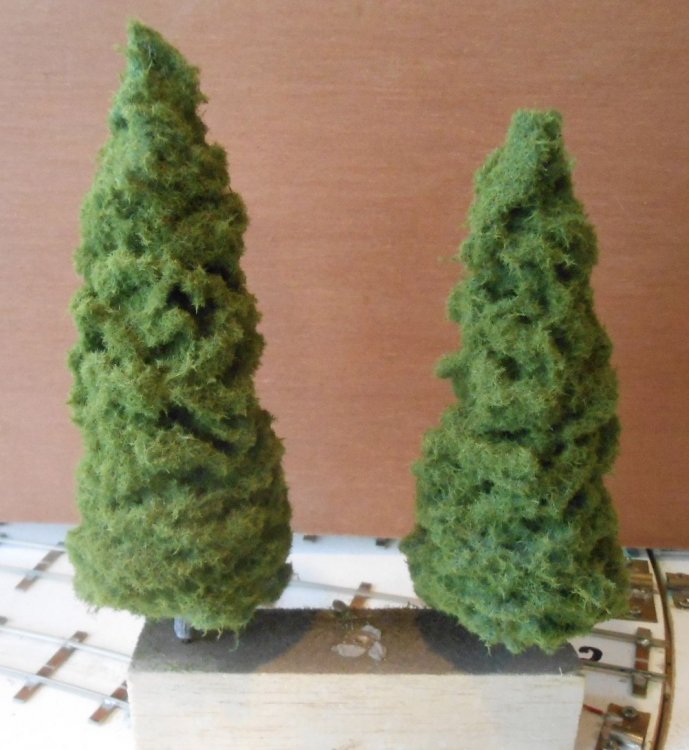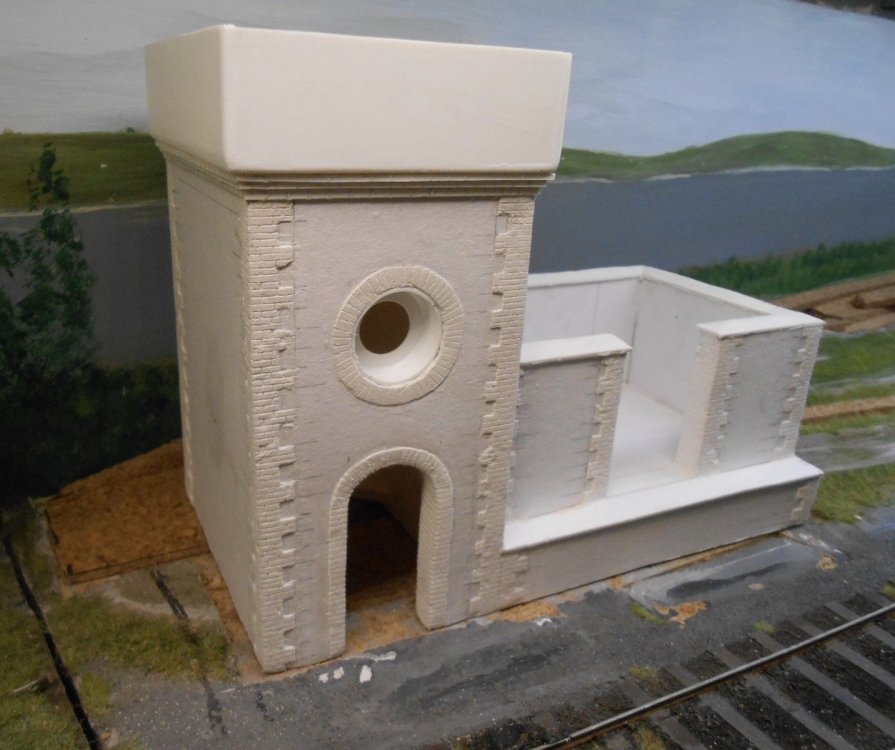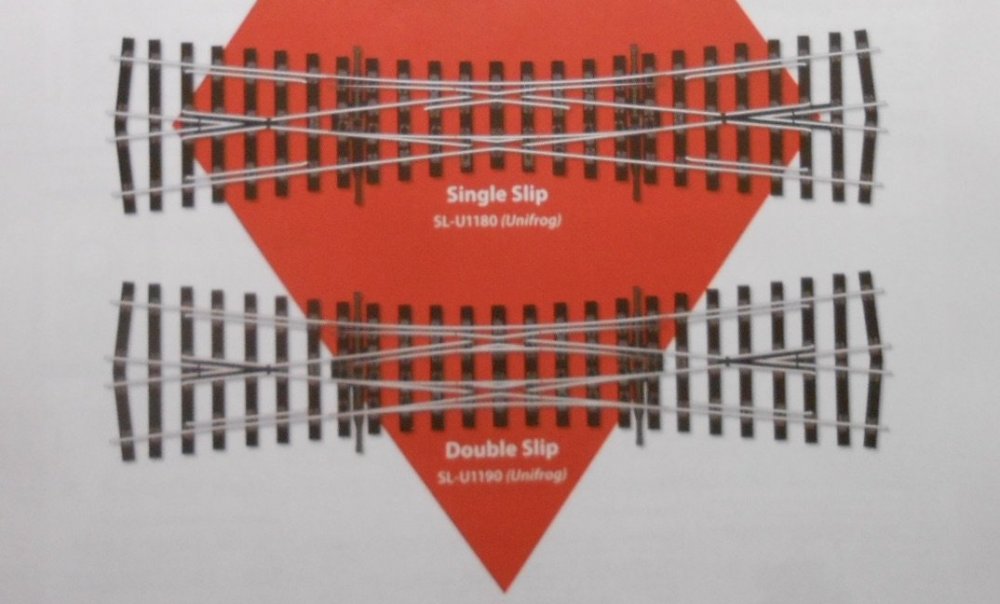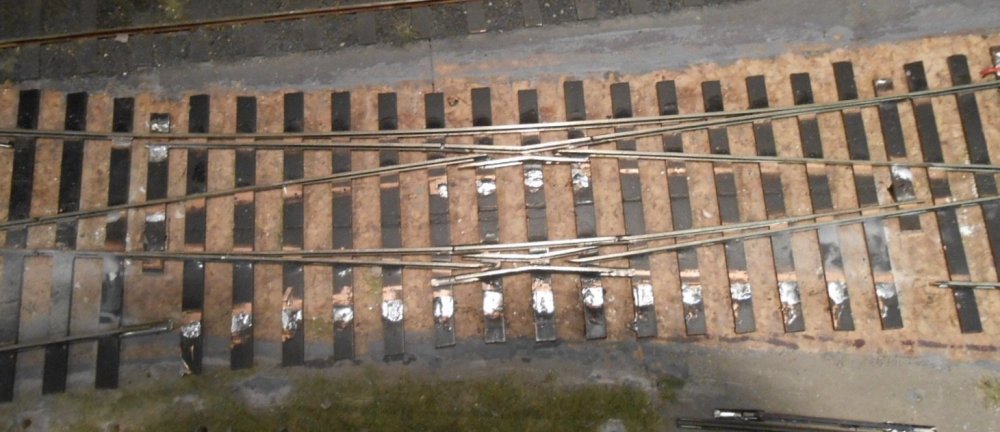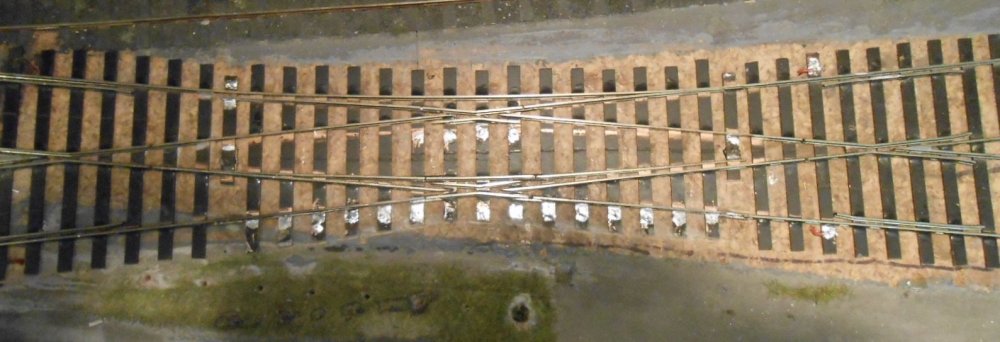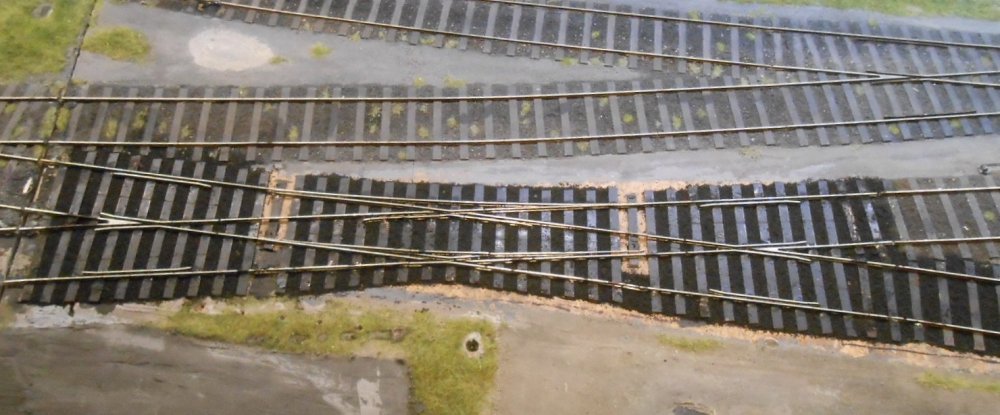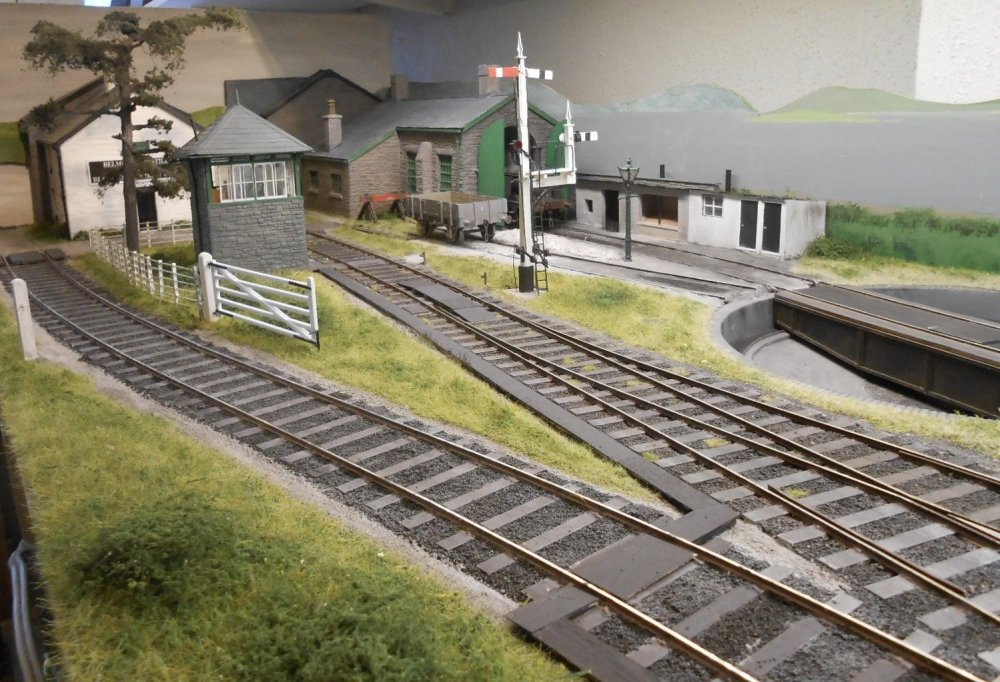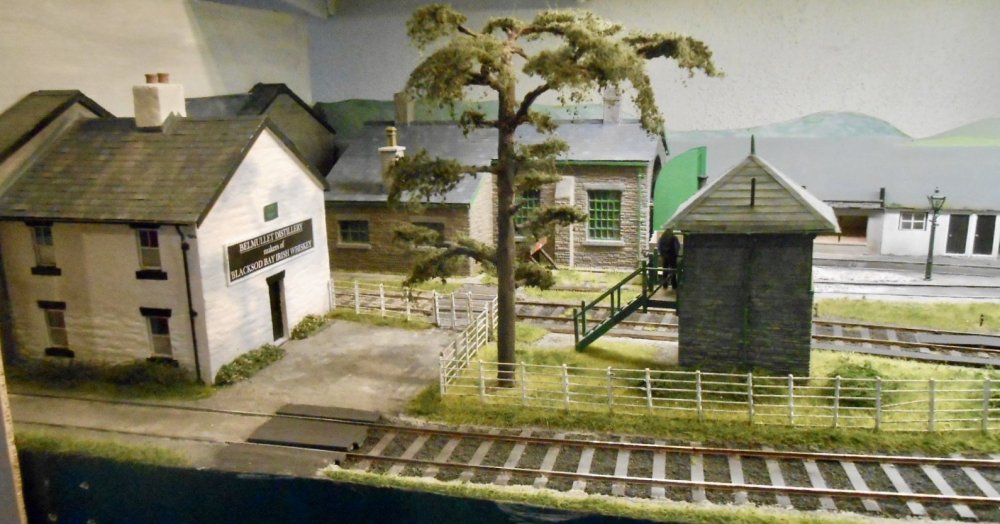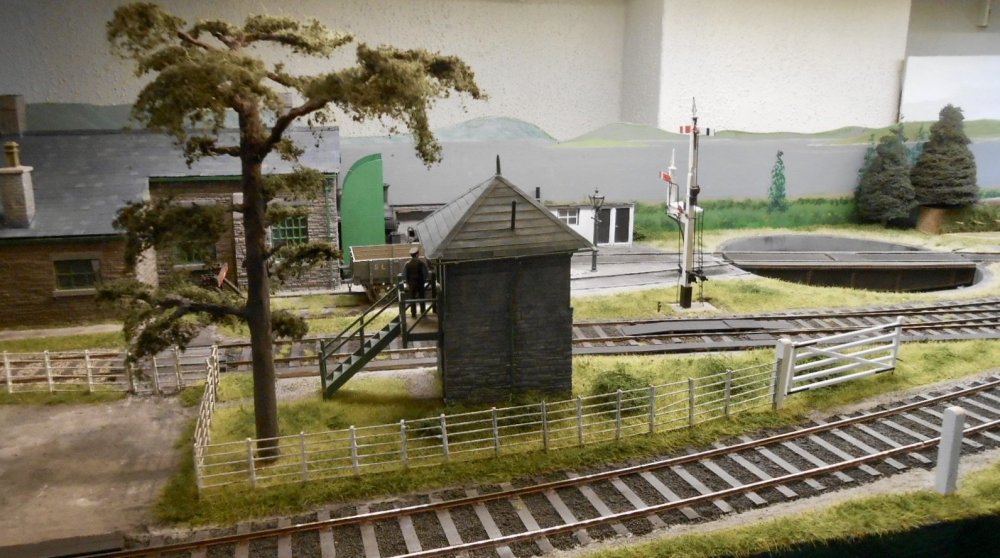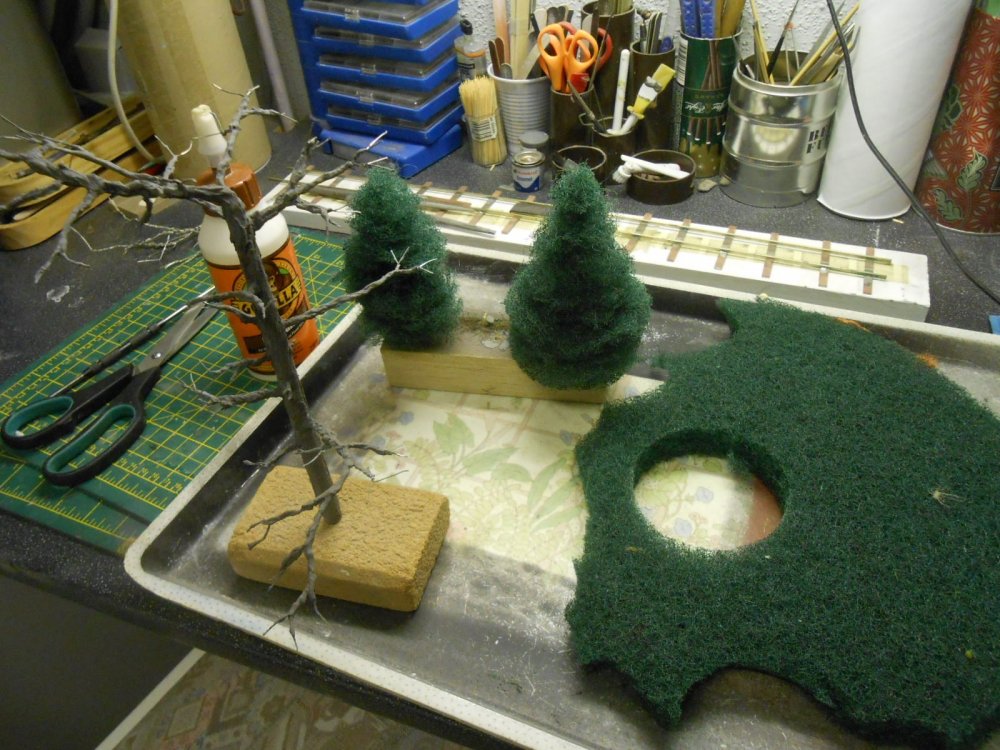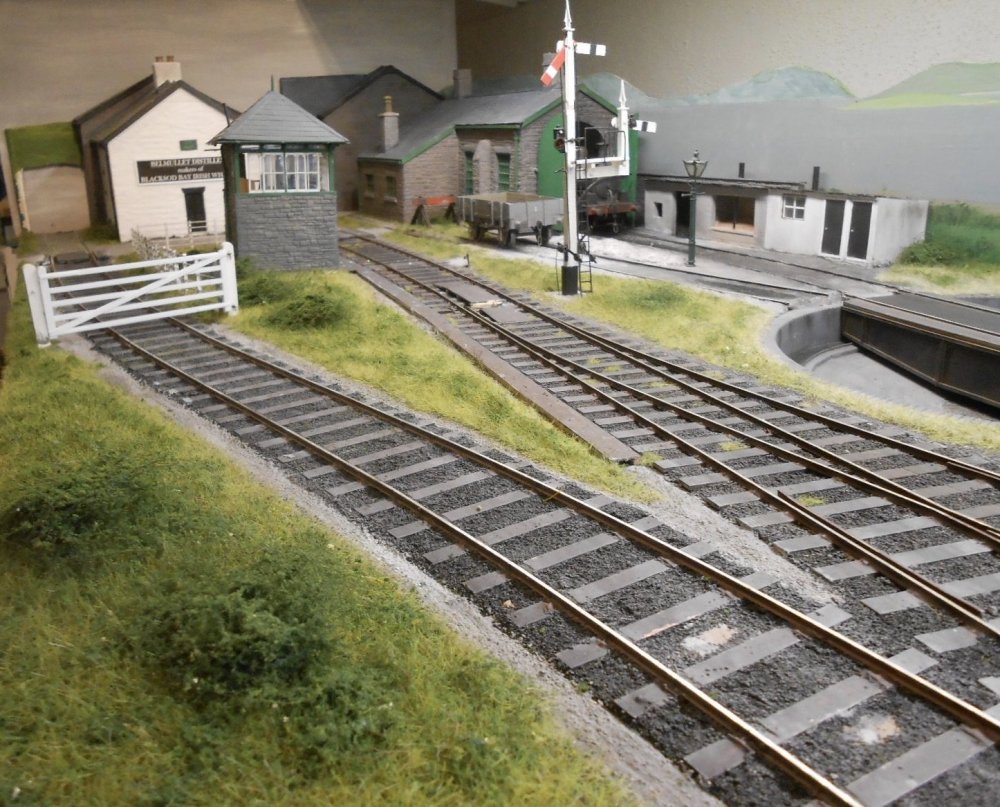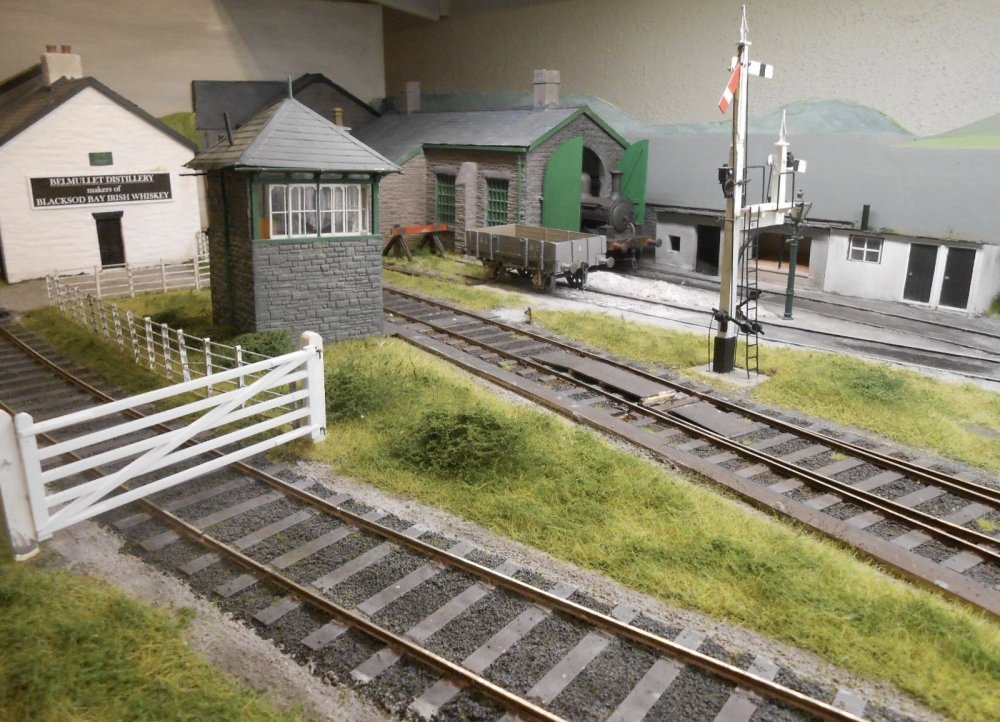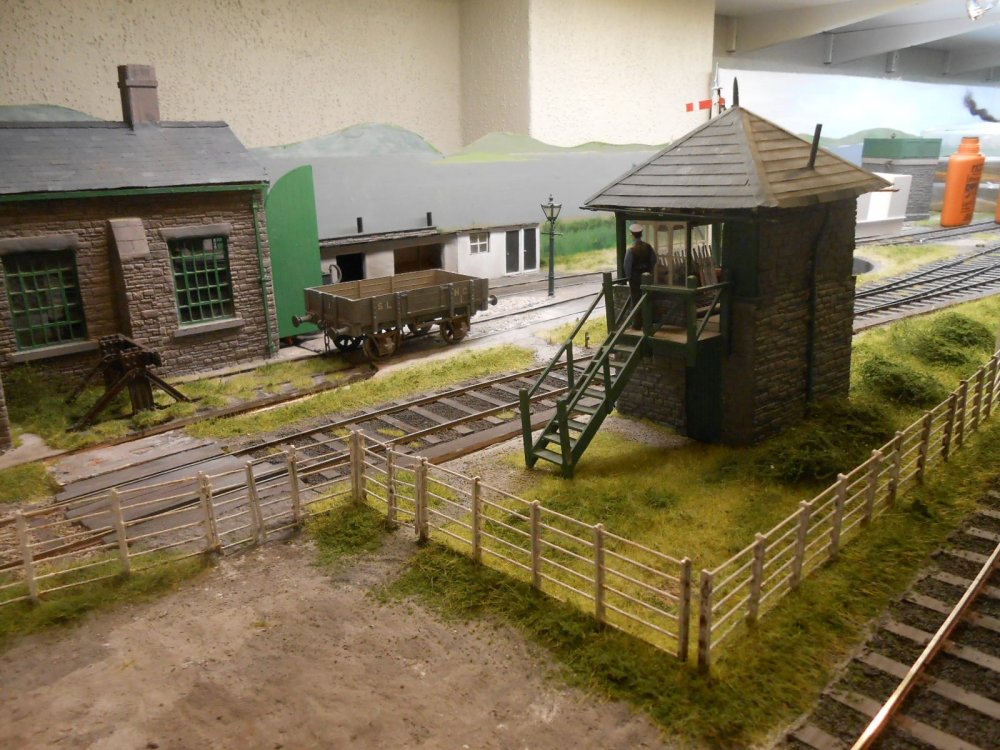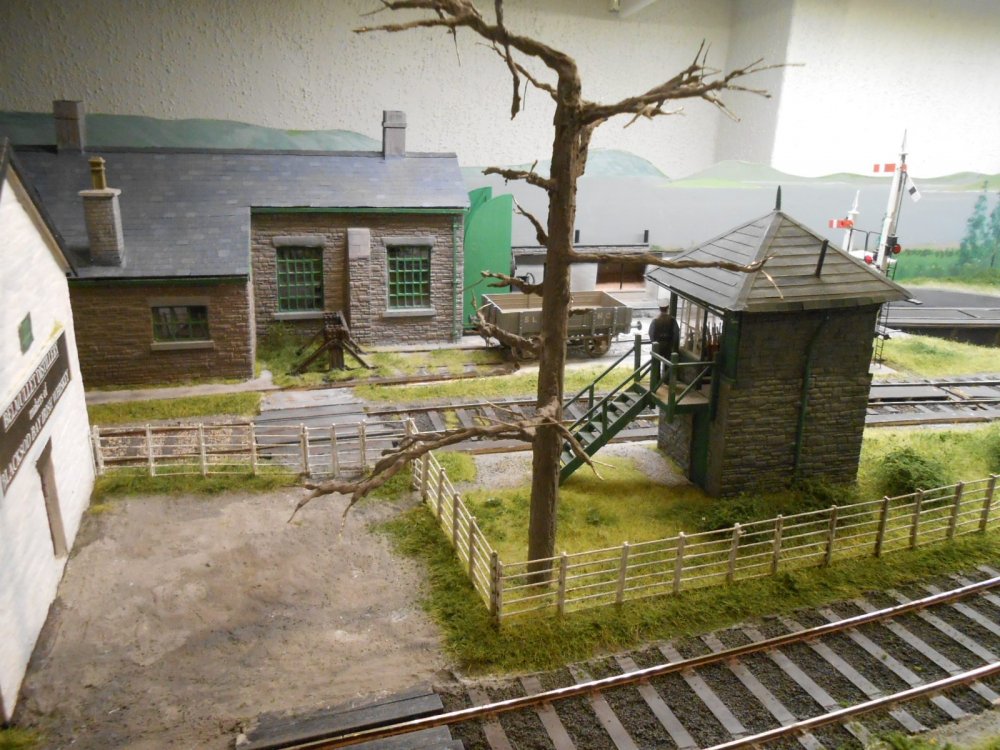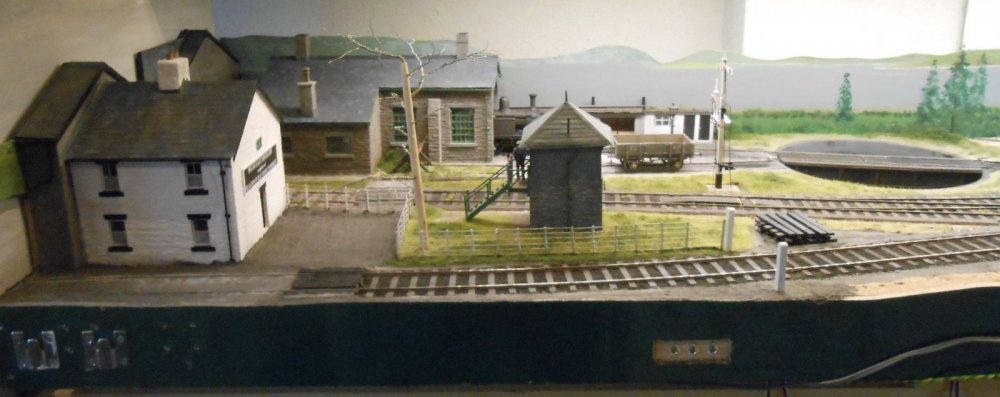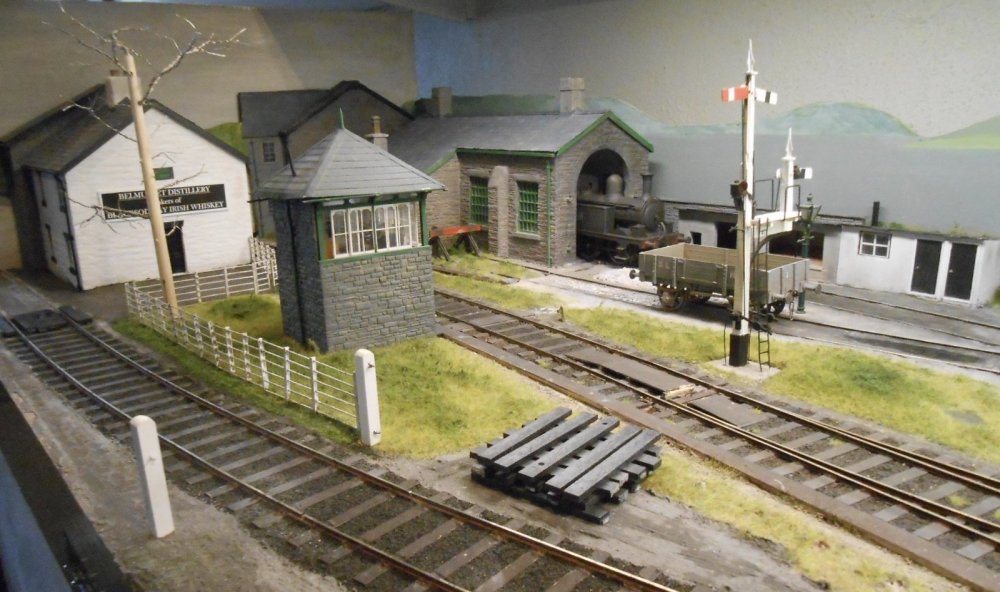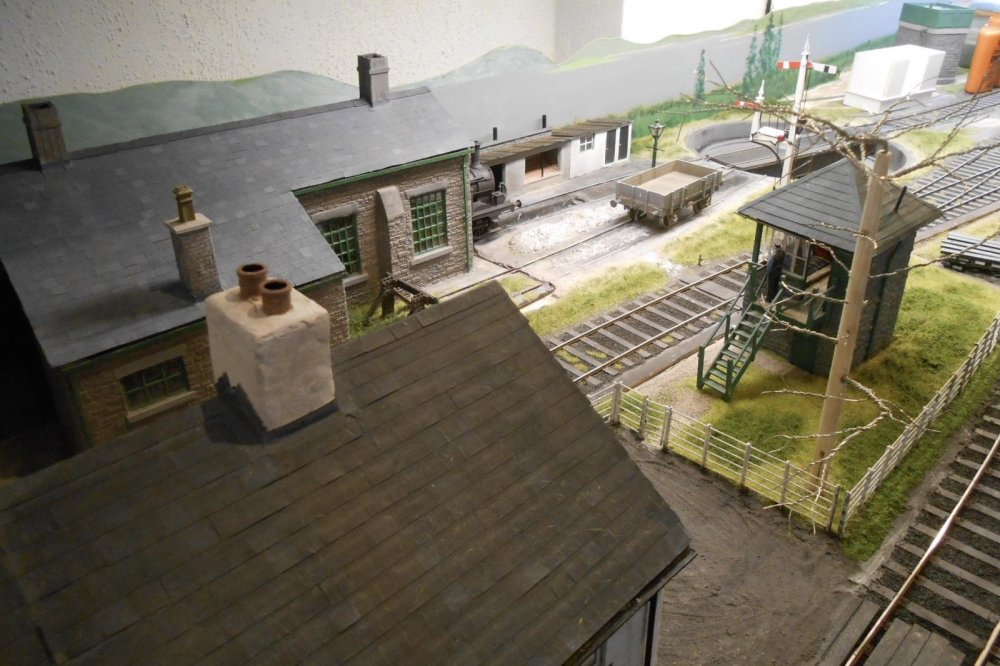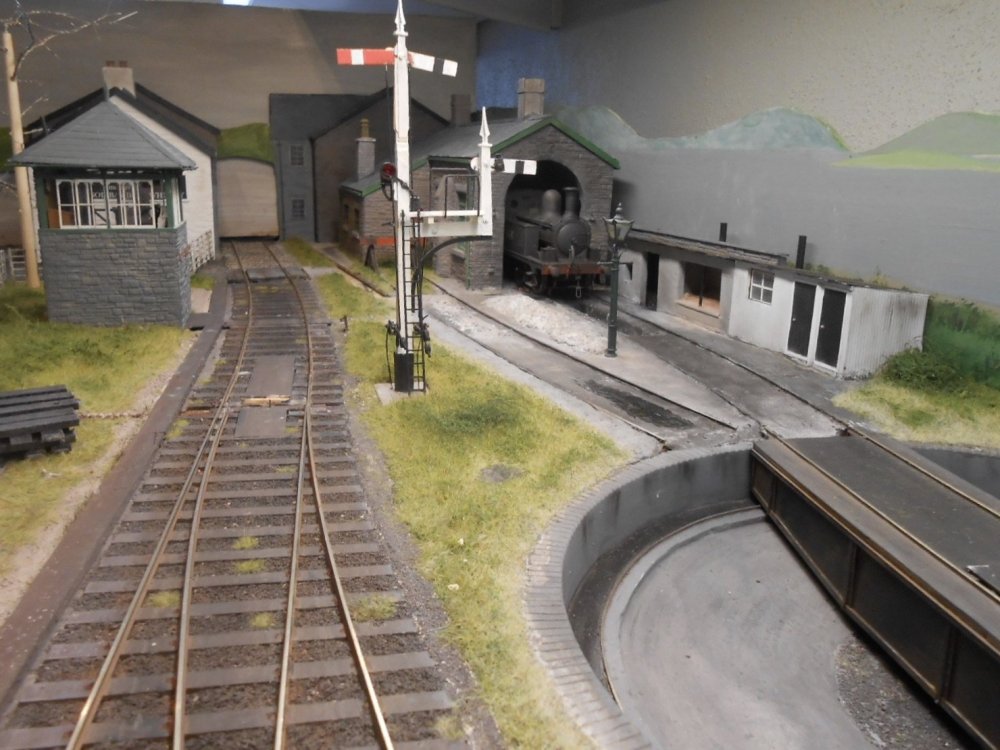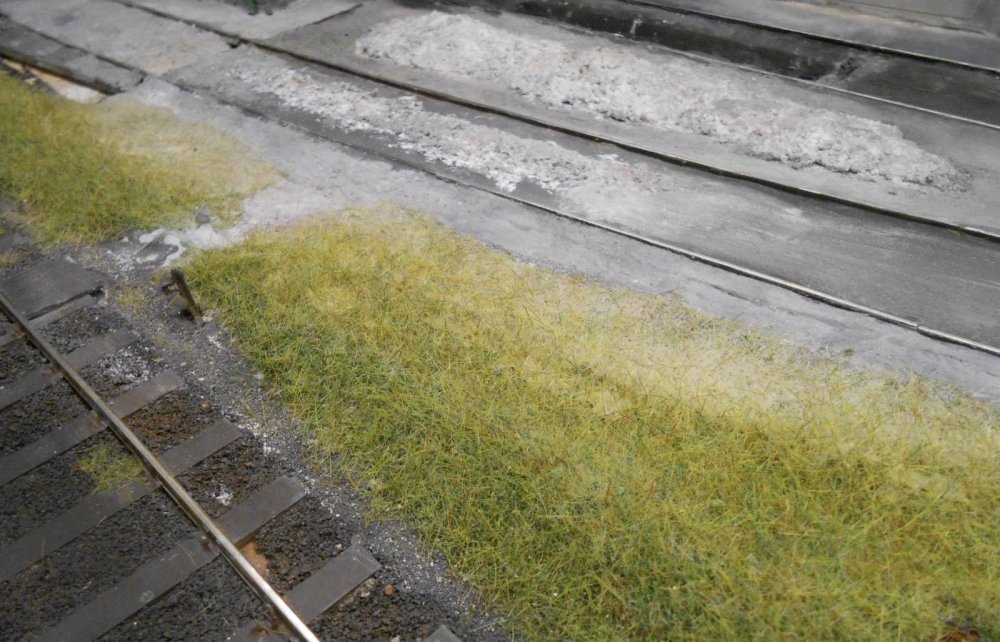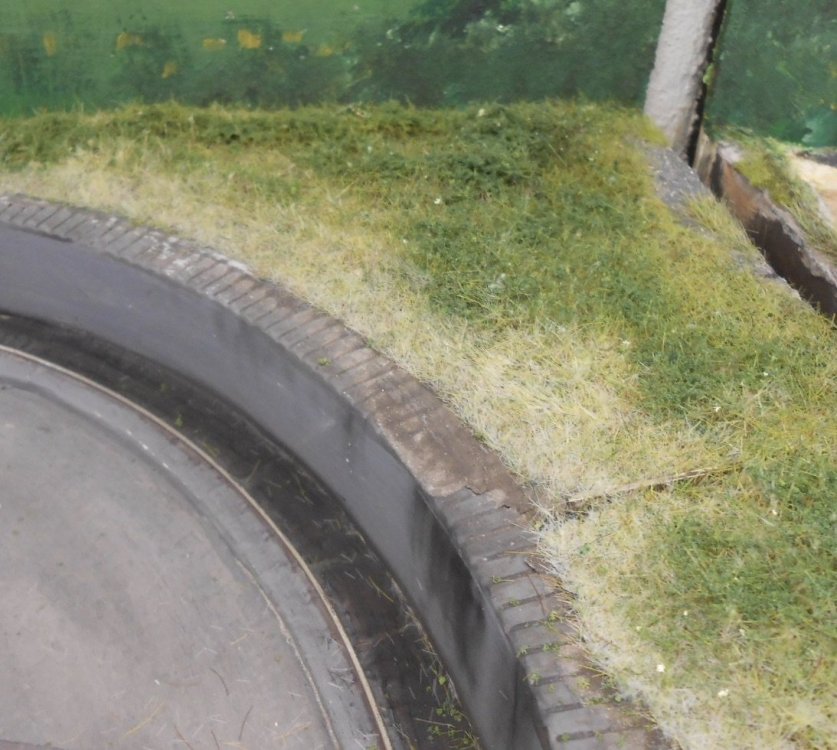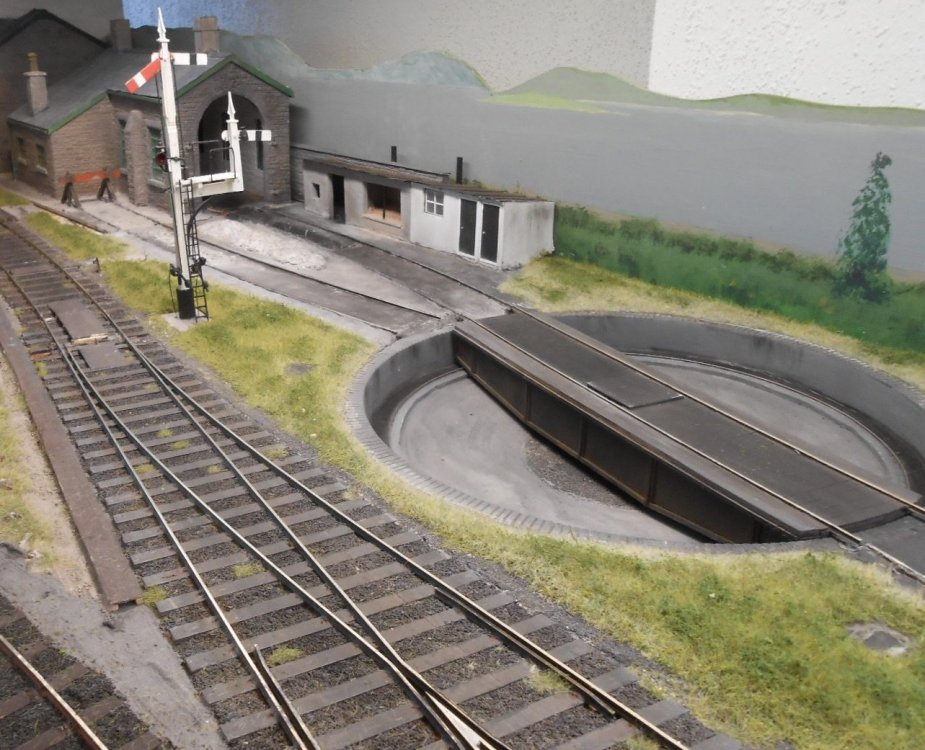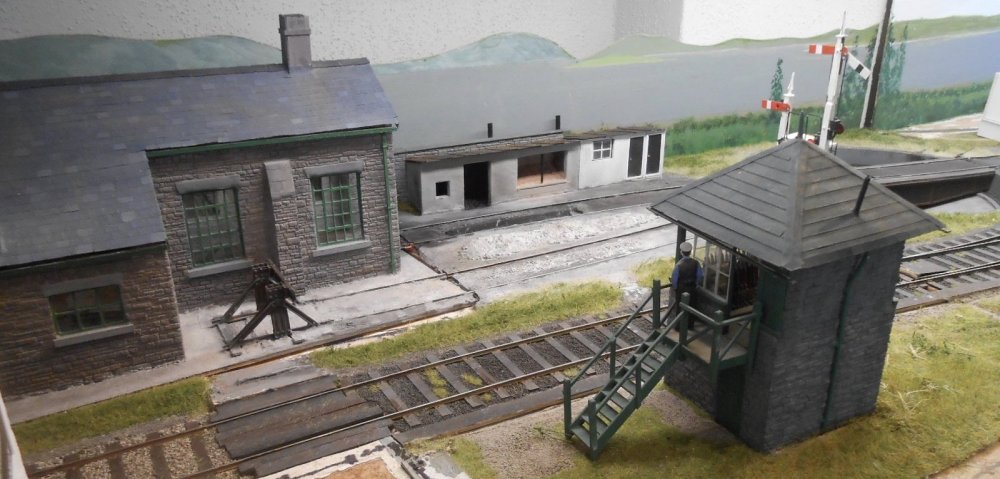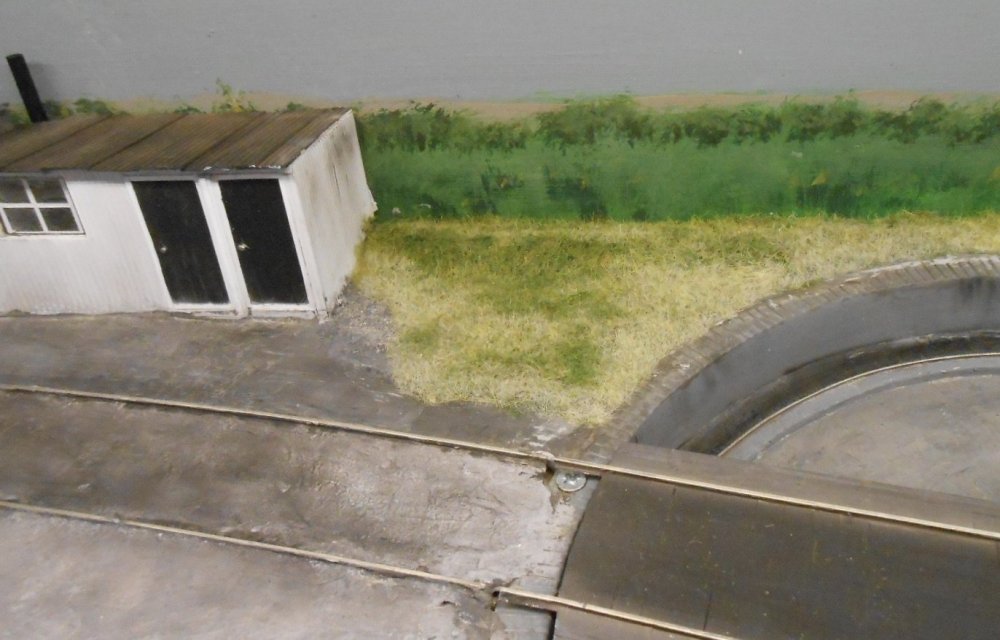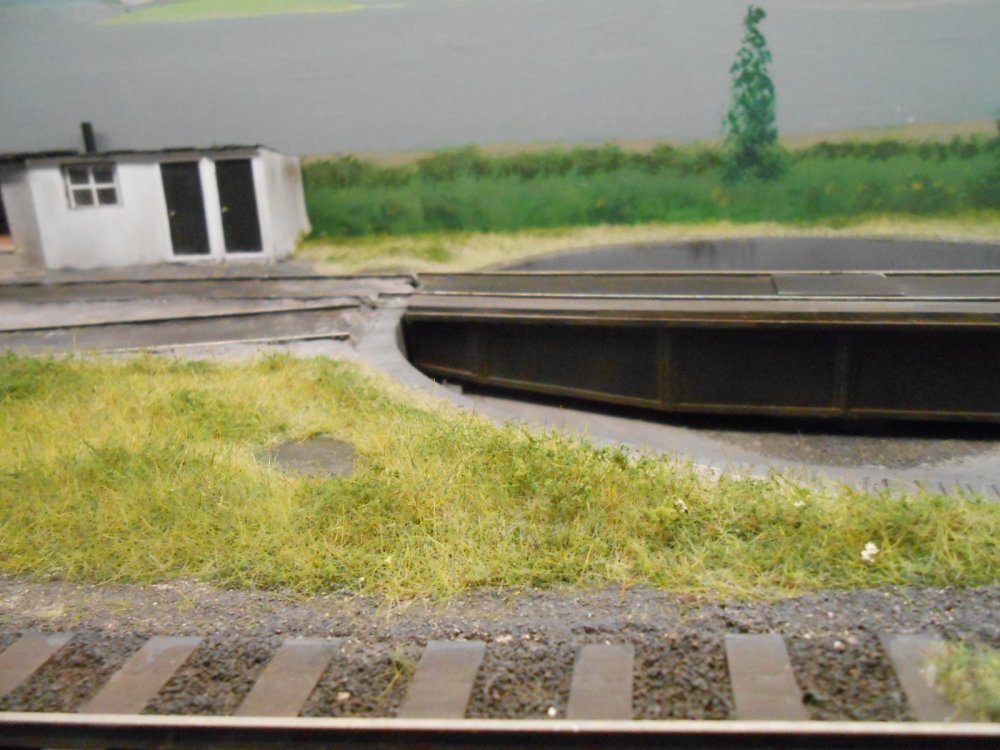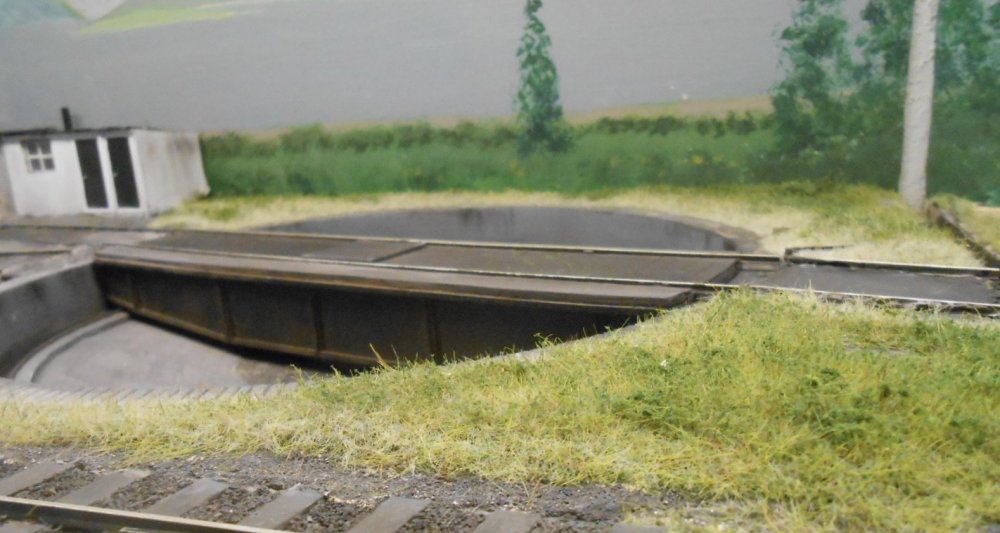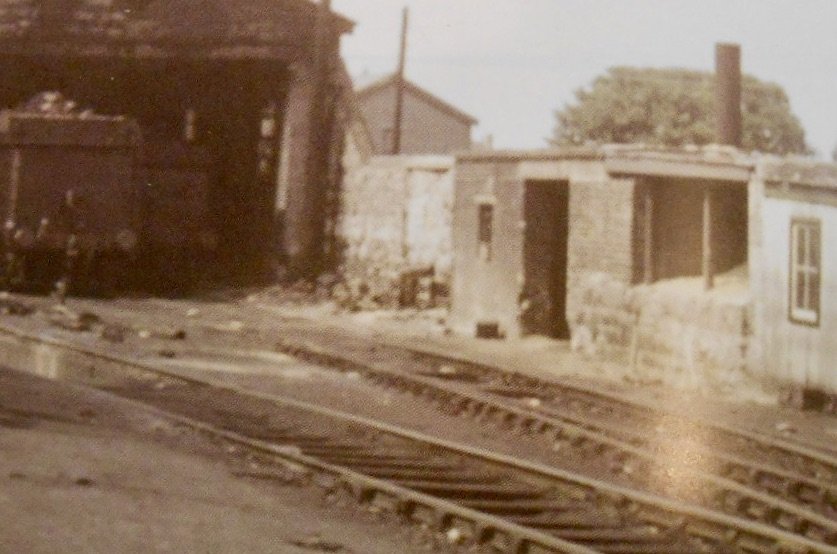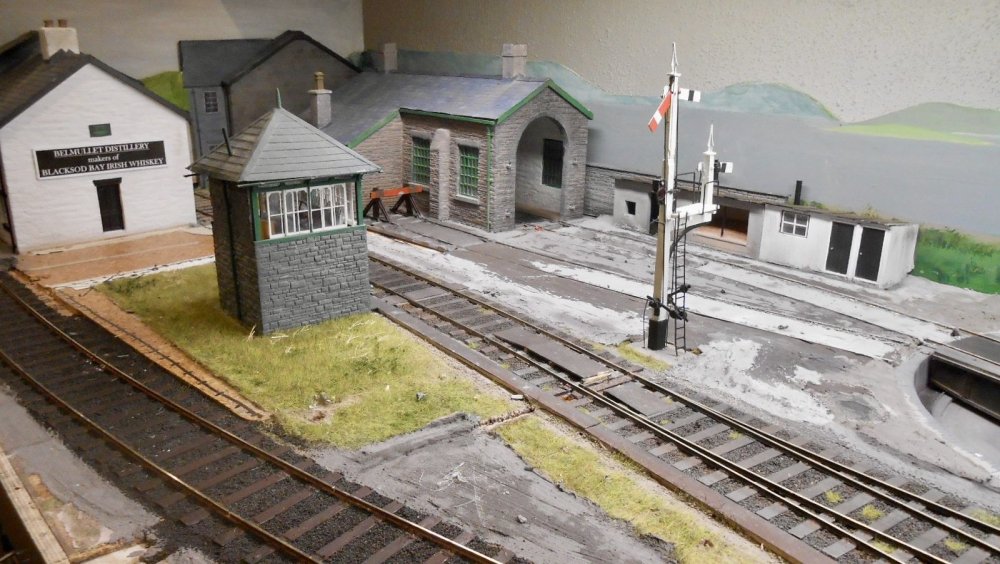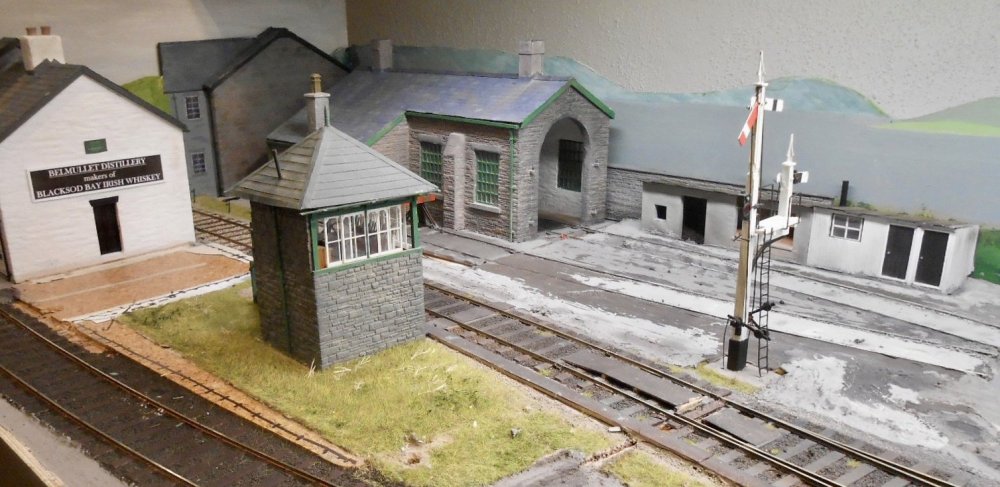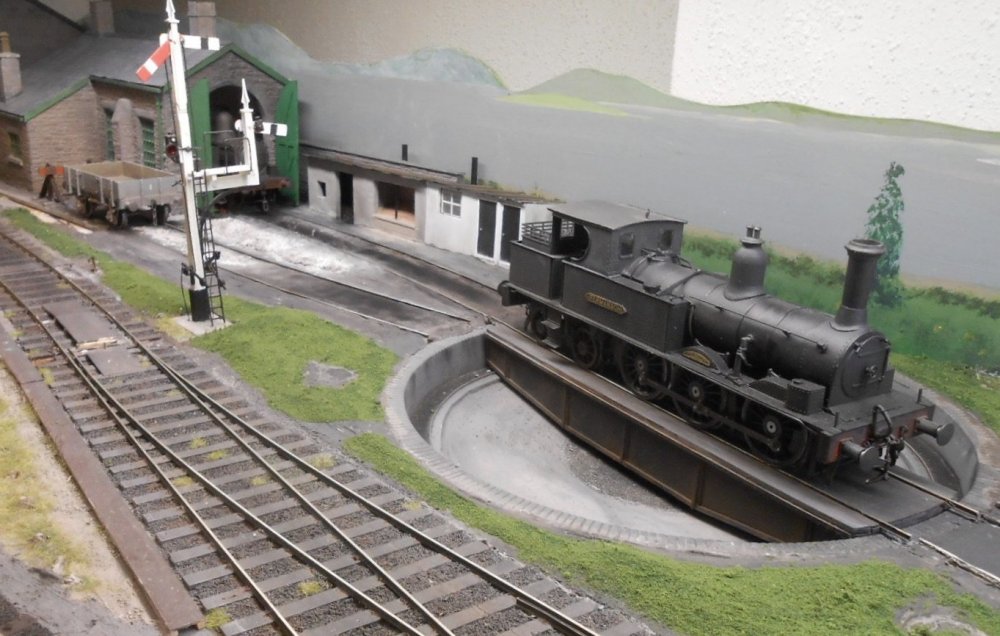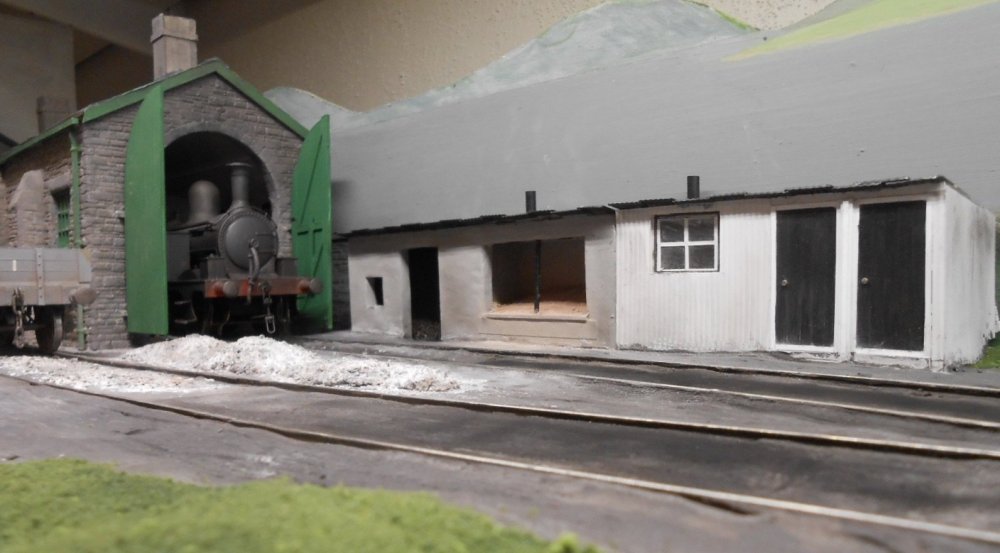
David Holman
Members-
Posts
4,338 -
Joined
-
Last visited
-
Days Won
117
Content Type
Profiles
Forums
Events
Gallery
Blogs
Store
Community Map
Everything posted by David Holman
-
Same problem with Hattons A3 and A4. £750 is a decent price for RTR Pacific in 0 gauge, but eight coaches for it to haul will cost a couple of grand. That said, if you have ever made a coach, either kit or scratch, then you know how much work is involved, so £200 for a brass coach is actually good value.
-
The Really Useful Box Company have various sized offerings which are pretty robust and stack nicely too. I've also used A4 box files to good effect. A bit of work with card spacers, fixed with a hot glue gun is ok even for 7mm scale wagons. Plus you can get five of them in a large supermarket heavy duty carrier bag.
-
Subtle, understated, quality.
-
Looks like it will be a very fine model indeed.
-
Christmas Projects As mentioned previously, I like to have some modelling to do over Christmas, because [unless you lie Soaps or Reality TV] there ain't a lot going on the gogglebox. The first couple of pictures show some experiments with conifers. My thinking is Belmullet needs a few to act as wind breaks, not least around the turntable. The area looks pretty treeless on Google Earth, so a few planted trees won't come amiss. The ideas are straight out of Gordon's second book on trees and the models are built around some tapered dowel, with the structures made from either industrial floor cleaning pad or kitchen scouring pads. The latter, being thinner, are easier to work with, but unless you are a part time flamenco guitarist, your fingers will be sore afterwards! Basically you cut a series of circles, tease the material out, make a hole in the centre and then mount them on the dowel, fixing with PVA. The final touch is to use a puffer bottle to squirt on dark green, short, static fibres. Not entirely convinced and want to have a go with rubberised horse hair, which should give a less dense appearance, enabling the earlier versions to go at the back. The other two pictures show work so far on a Midland Great Western combined water tower and coal stage - the fortress type. It is based on a photo in Jonathan Beaumont's excellent book 'Rails to Achill Island' [p130]. There is also a nice engineer's drawing of a water tank earlier in the book. At first, I didn't realise how big it was going to be, but so far, it seems to fit the space I've allocated alright. The shell is foam board, covered with watercolour paper to eventually represent a rendered finish, as per Achill. However, it also needed a lot of brick reinforcing on the corners and around the door and window. This has been made using scribed DAS clay. The trick is to first put on a thin layer of PVA and then 'thumb' the DAS onto that to about 1mm thick. Leave to dry, then sand smooth before starting the scribing. Fiddly? you bet, but very satisfying and it means the mortar lines are easily carried around any corners. The tank is 80thou/2mm plastic sheet, though there is still a fair bit to add here, plus the sliding doors of course. Likewise the louvres on the round window are a pain to make in my experience, but it has come together nicely so far.
-
Whether an individual or combined effort, it looks the business!
-
As it is 12L, suggest not, JB. A fine looking model, with some very neat soldering too.
-
Excellent! One aspect of small layouts is being able to go to town on the details. In a big scene track is something n lost, but here it really matters. Hard to think those sleepers are copper clad and not wood.
-
A layout that is clearly very much enjoyed - exactly how it should be! Splendid stuff.
-
What's happening in February then???(:
-
Always nice to see updates on this splendid project.
-
Double slip to single Apart from being viewed from the opposite side, the main change in turning Arigna Town to Belmullet is the addition of an on scene branch, going to the harbour. This was intended to be reached via a single slip & though I commissioned said piece from Marcway, when it arrived, I found they'd actually built me a double. This was duly installed, but I must confess that I wasn't entirely happy with the scenario, for several reasons: A double slip isn't really necessary, as all the required moves can be covered by a single A double slip would require additional signals & though these would be ground signals, or even just point indicators, there isn't really the room to site them The tie bars on the double slip need a fair old shove to move them, something I was not convinced the servos I'm using would be up to on a long term basis. So, have been brooding on this for a while, until redemption appeared in the latest edition of Railway Modeller, where a full page advert for the new Peco Code 75 diamond crossing, double and single slips nicely showed the differences between a double and single. Looking at the Marcway track, it soon became apparent that its construction would make conversion fairly simple, not least because the point blades pivoted on ordinary rail joiners, so removing two pairs was a simple matter of unsoldering the blades from the tie bars and lifting them away. The other work involved cutting away the curved stock rail and then using it to make a new, angled stock rail instead. This was also helped by the short angled section itself being joined to adjacent parts by rail joiners. Finally, a long check rail was made and all the pieces soldered in place. The whole lot only took me about half an hour - which only goes to show that a bit of forward planning can actually pay dividends once in a while! I then spent another half hour tidying up the sleepers and also some of the wiring, where I can only think I was more interested in making sure there was power to the track, rather than the wiring looking neat as well. The ballasting took much longer and still requires more work. Never my favourite pastime, but one of those jobs that, for me, has to be done properly for the track to look right. Now that Christmas is coming up fast, I then decided I needed a project that could be worked on in the lounge, rather than the workshop, as the former might seem a bit anti-social over the festive period, while I will definitely need something to keep me amused while others in the house are watching the usual rubbish on offer on the TV... Hence the last picture shows the mock up I made this afternoon of a water tower & coal stage, based on the one shown on p130 of 'Rails to Achill', by JHB of this parish. It is made of foam board, the thick walls of the prototype meaning I've had to use double thickness. The plan is to cover it in water colour paper, to represent the rendered finish, with scribed DAS clay for the brick corners - hopefully a minimum of tools and a tray on my knees will be all I need.
-
Baseboard 3 Generally, when I am building layouts, after doing general work like track laying and wiring, I like to concentrate on one board at a time. When I was working full time as a teacher/headteacher/leadership advisor, I used to reckon one 4' x 2' board would take me about a year to complete. Since retiring, things have speeded up a little, though my wife and I often wonder how we ever found time to go to work! Anyway, Baseboard 3 is the section holding the loco shed, turntable, distillery, signal box and harbour branch. The first three are all new models and required a fair bit of time. Since then, with the aid of a static grass machine and books by Gordon Gravett, scenic work has proceeded apace - including the addition of a Scot's pine. The latter is straight out of Gordon's second tree book [conifers], although I've used Woodlands Scenics conifer mesh instead of static grass fibres for the foliage. The idea is that the tree's somewhat open canopy will help hide the exit of the mainline into the fiddle yard. Most of the ground cover has been done now, except for the sub-board on which the loco shed sits. I want to enter this in my local club's competition, so it will not be fixed to the layout until the end of January. Final detailing will need to wait a bit too - adding figures and other small details, until I've been to the Stevenage show [with Fintonagh], in mid January, when hopefully I'll be able to buy some bits and pieces having missed the Reading Trade Show earlier this month. The next steps will be to improve the joint between baseboards 2 and 3 [bit of an earthquake crack at the moment], then get busy with the next board, a key feature of which will be the water tank and 'fortress' coal stage.
- 179 replies
-
- 15
-

-

-
I believe he sold the boiler to a local laundry for £100, the tractor cost him £5! He did still have to convert it though.
-
Indeed, I like to offer a choice! Plus there is also Forbes bar outside the station. The common thread here being you only get an establishment named after you if you are dead...
-
Suggest the following: First, have a tidy up, no disrespect here, my model area gets like this too, so a clean up is always a good idea. Second, clean all track and wheels (meths, or lighter fluid better than anything abrasive), so stock runs well. Third, think about what you want from the layout. Eg, give a purpose to each siding, such as general goods, oil tanks, timber, minerals or whatever. With purpose for each siding, you can then make up an in coming train and shunt the wagons accordingly, with the outgoing train made up of wagons they are replacing. Having a card for each wagon that you can shuffle and draw out enough for each train can be fun too. Finally, allocate one siding just for sorting, otherwise everything will jam up very quickly.
-
Whether to Weather or Preserve Pristine - Quite the Quandary!
David Holman replied to DJ Dangerous's topic in General Chat
Giles is rather good and a master of stage lighting, which is his day job. The lorry in the picture is radio controlled, one of several on his layout, along with working gantry cranes too. As for weathering, for anyone not sure, suggest the way forward is to use weathering powders. While they will need some sort of fixative spray, to prevent the effect being rubbed off by handling, in the short term, if you don't like it, then the weathering can be easily cleaned off with damp cotton buds. -
Baseboard 3, with the loco shed, is pretty much blocked in now, though a fair bit of fine detailing remains however. Work over the last couple of days includes: Liberal use of chinchilla dust to create the cess alongside the tracks More chinchilla dust mixed with with Polyfilla to do the ground in front of the distillery Polyfilla, then fine scenic crumb and static grass to do the rest of the ground cover around the signal box and along the front edge of the baseboard. This afternoon, spent an enjoyable hour or so adding more fine crumb and postiche to create weeds and brambles on this new area. A five bar gate to separate the harbour branch from the station. This was mostly made from a mix of 100 x 60 and 80 x 60 micro strip. The main focus though has been turning to the trees. The scots pine - intended to help mask the exit to the fiddle yard - has been given two coats of bark mix [still needs at least one more], while four pieces of dowel have been tapered in the drill to make some conifer trunks. Two of these are underway, using Gordon's book on the subject, while my fingers are currently smarting from separating an industrial floor scouring pad into layers for the foliage.
-
Code 75 track and the low viewing angle really pays off in these photos. Well ballasted and weathered track certainly adds to the realism too. Nice one.
- 468 replies
-
- 2
-

-

-
- ballyercall
- layout
-
(and 1 more)
Tagged with:
-
Slowly adding details and refining some of the scenics. I spend as much time staring at the layout from various angles as I do actually modelling, it seems! The long grass and weeds between the shed and the turntable have been given some brambles. Dead easy to do - a tuft of postiche, sprayed with fixative and then sprinkled with fine crumb is all that is needed. A few brambles have also grown up around the buffer stop by the shed. Have since given the ground around the signal box the static grass treatment too. There is a robust fence around the cabin now, it is recycled from Arigna's cattle dock, but seems to look the part. Meanwhile, the distillery building has been set into the ground and some more work done on the harbour branch track, including two gate posts - again ex Arigna, this time the level crossing. I see the harbour branch as a private siding, lightly laid, that is awaiting a working horse [!]. Lark and/or the G2 will cover the duties for now... You might also be able to spot the start of a scots pine. Straight out of the Gravett book on conifers, it is based on a piece of 12mm dowel and thin wire. More on this later, as it develops.
-
There is a one minute video from Peco on YouTube. Seems simple enough - there fixing points to glue to the underside of the TT and the motor is fixed to them. It's a stepper motor, supposed to be very quiet and operated by push to make switches, one for each direction. £65 - reasonable value, I suppose, though the Kitwood Hill motor was being sold for a tenner and the Freezinghall one about twenty.
-
You must be one of the first to buy one of these. They have been on the Peco website for about a year, but only just become available it seems. So, how does it work and how does it attach to the table, plus would it be strong enough to turn a loco weighing a kilo or more? Indeed, how is is powered and controlled? In other words, any chance of a review, please?
-
Fun with Nochenstoffen One of my favourite modelling tools, has to be the static fibre machine for doing grass. A few years ago, a square metre of grass involved all sorts of convoluted stuff, anything from glueing down lint and ripping it away when dry, to planting individual tufts of teddy bear fur and could take several days to achieve a less than convincing finish. Now, with a static grass machine, this sort of space can be done in a few hours and looks much more convincing too. Before I started with the greenery, a bit of time was spent toning down some of the ground colours. After, diluted PVA [about 60/40 with water] was painted on to the areas in question and given a good covering of static fibres. I used a mix of 4mm and 6mm lengths in two or three different greens, leaning to the yellow end of the spectrum. While this makes a dramatic improvement to bare ground cover, despite the range of colours used, it still looked too uniform, so the next day, I set about clearing some areas, like the edge of the ash siding and round the turntable rim, before going over them again with some short and medium dry grass fibres, to represent where it would be trodden down by footfall. Once this was dry, I then went over some areas again to make the grass longer in places and blend everything together. However, this still can look a bit flat, so what can really lift a scene is to add an impression of weeds and other leafy plants. Doing this is simplicity itself. A light brush over the tops of some of the fibres with that dilute PVA again, then a sprinkling of fine crumb [Woodlands Scenics darker green], with a few different textures mixed in and half an hour later, the whole area is looking a lot more interesting. I'll probably add a bit more later - perhaps some nettles and flowers, but it really does make a difference, I think.
-
Shedwork As much layout as workshop, but this is work in progress, which is why this update is here. Had Belmullet existed, then the loco shed would have been a busy place and no doubt bigger than my modest affair here. In the late 19th & early 20th centuries, potentially four different companies might have visited - MGW, SLNCR, WL&W and GS&W. No doubt each would want coal and water, so it seems appropriate to include a MGW 'fortress' style coal stage. Presumably, the station master [or shed master?] would hold the key and crew would be expected to sign a chitty before they got any coal or water? The coal and water will be on the next baseboard though, so the subject here is an interesting pair of structures I spotted in a photo in Kevin McCormack's wonderful album 'Irish Railways in the 50s and 60s'. Athlone shed has what looks to me like a sand drying installation, with a small coal bunker one side and a large 'shelf' on the other where sand would be spread to ensure it was dry. Am assuming heat from the coal furnace circulated under the sand shelf to do that. That, at least is what will happen at Belmullet!. Next to the sand drier at Athlone is a shed or bothy, so with so many visiting engine crews, it makes sense to have something like this as well.. Both structures look quite narrow and ideally fit the space available. The models are very simply made from card and foam board, with Slater's plasticard for the corrugated iron roofs. Detailing is taking more time than actual building, with stuff like a small pile of coal and a larger pile of sand - the latter being chinchilla dust mixed with weathering powders. A fair bit of time has also been spent on general ground cover & this is still work in progress. Various colour photos in the McCormack book has been studied, looking for colour and texture. The base layer is Polyfilla, mixed with PVA and black acrylic, to get a fairly smooth, somewhat oily finish that you see around sheds, with the ground cover coming above the sleepers. Once dry the whole area is being painted with acrylics - essentially using just black, white and brown - but with added texture from talc and weathering powders. There are also some piles of ash. There is an ash pit in front of the sand drier, so crews can empty the fireboxes. This stuff seems to usually have been fairly light grey in colour, but of mixed size and shape. To create this I mixed at least four or five colours and size of ballast in with a tablespoon of Polyfilla, so it could be set in various sized piles between the two tracks, the front one of which will have an open wagon posed, waiting to be filled. I imagine the SLNCR would be happy to the it away and use as ballast somewhere. More weathering powder and talc is still needed to get the scene looking right, while there also needs to be a further pile of darker ash from the loco smokeboxes. The green scatter material you can see is just the foundation for static grass, still to come, but I find it does help with visualising the wider scene. Meanwhile, the loco shed itself is on a separate sub-board, because I want to enter it in my club competition, so it will not be finally bedded in until the end of January. The back scene behind the shed has been cut to the shape of the low relief buildings, with a temporary 'skyboard' slotted behind. Have still yet to decide if this will be MDF or a length of roller blind. for the whole layout. The photos show the developing scene and include the signal box and signals to help set the scene thus far.
.png.c363cdf5c3fb7955cd92a55eb6dbbae0.png)
